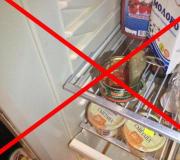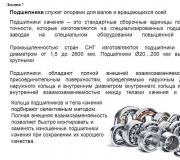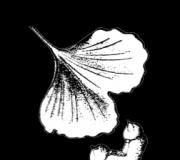Хромает topic simple machines. Методическая разработка занятия по английскому языку на тему "Машины и работа" (3 курс)
Topic: Simple Machines PSSA: 3.4.7.C / S8.C.3.1
Objective: TLW compare different types of simple machines. TLW compare different types of simple machines. TLW explain the difference between a simple machine and a compound machine. TLW explain the difference between a simple machine and a compound machine.

MI #1: Levers A lever is a simple machine that has a bar that pivots on a fixed point called a fulcrum. A lever is a simple machine that has a bar that pivots on a fixed point called a fulcrum. Levers are classified based on the location of the input force, load, and the fulcrum. Levers are classified based on the location of the input force, load, and the fulcrum.

MI #2: Classes of Levers First class levers have the fulcrum between the input force and the load. First class levers have the fulcrum between the input force and the load. - Includes see-saws Second class levers have the load between the input force and the fulcrum. Second class levers have the load between the input force and the fulcrum. - Includes wheelbarrows Third class levers have the input force between the load and the fulcrum. Third class levers have the input force between the load and the fulcrum. - Includes hammers and fishing poles

Mi #3: Pulleys A pulley is a simple machine that has a grooved wheel that holds a rope or a chain. A pulley is a simple machine that has a grooved wheel that holds a rope or a chain. There are three types of pulleys; fixed, movable, and block and tackle. There are three types of pulleys; fixed, movable, and block and tackle.

MI #4: Wheel and Axle A wheel and axle consists of two circular objects of different sizes that rotate on the same axis. A wheel and axle consists of two circular objects of different sizes that rotate on the same axis. The axle rotates a smaller distance than the wheel, which results in a greater output force. The axle rotates a smaller distance than the wheel, which results in a greater output force.

MI #5: Inclined Planes An inclined plane is a straight slanted surface. An inclined plane is a straight slanted surface. A wedge is a pair of inclined planes that move. A wedge is a pair of inclined planes that move. A screw is an inclined plane wrapped around a cylinder. A screw is an inclined plane wrapped around a cylinder.

MI #6: Compound Machines A compound machine is a machine that is made of two or more simple machines working together. A compound machine is a machine that is made of two or more simple machines working together. Because compound machines have more moving parts, their mechanical efficiency is typically low. Because compound machines have more moving parts, their mechanical efficiency is typically low.

So What…? Real Life Application Machines make work easier, so it is important to understand the different types of simple machines. Machines make work easier, so it is important to understand the different types of simple machines.

Or . However, some of the most important and useful machines are quite simple. In fact, scientists even call them simple machines!
So what is a simple machine? Is it a machine that does a simple , such as addition or ? Maybe it"s just a machine that"s really easy to operate, like an old television remote control? Or could it be any machine that makes life easier?
While simple machines do make our lives easier, they"re much older than either television remotes or calculators. Simple machines are some of the first machines ever created.
Since the earliest human beings walked on Earth, they looked for ways to make the of everyday life easier to accomplish. Over time, they did this by inventing what has become known as the six simple machines.
Wedges are moving inclined planes used to lift or separate. Wedges are usually used to cut, tear, or break an object into pieces. Common wedges include knives, axes, saws, scissors, and shovels. However, wedges can also be used to hold things in place, such as in the case of staples, nails, shims, or doorstops.
A is a twisted version of an inclined plane. It allows movement to be translated into an up or down motion that takes up less space. Screws can also help hold things together. Common examples of screws include jar lids, drills, light bulbs, and bottle caps.
These six simple machines are all around us. Often more machines, also called machines, consist of one or more of the simple machines put together. Can you imagine how much easier life became after the invention of these simple machines?
(15 minutes)- Distribute small toy cars that have wheels joined by axles to groups of students. Kick-start a discussion with some questions about the toy car mechanics, such as: How do these toy cars move? How are the wheels on each side of the car joined to each other?
- Have a student volunteer point to the rod that holds the two wheels together. Explain that the bar that joins two wheels is called an axle .
- Tell students that they will be learning about wheels and axles.
- Hold up the doorknob, explaining that it is an everyday example of a wheel and axle.
- Challenge the students to help you identify the wheel and axle in the doorknob. Listen as different students call out their guesses.
- After some speculation, tell students that the knob that turns is the wheel. The inner rod that is attached to the knob is the axle.
- Demonstrate how the wheel and axle works by turning the knob (wheel). That turns the inner rod (axle) and moves the latch, to open the door.
Guided Practice
(15 minutes)- To consolidate student thinking, set up activity stations with play dough and a rolling pin.
- Let students practice flattening the dough with the pin.
- Guide them to express these understandings: The rolling pin is a wheel and axle. When you push on the handles (the axle) the wheel turns and flattens out the dough.
- Challenge students to think of other common machines that have one wheel like the rolling pin. Great examples include a wheelbarrow, a top, and a playground merry-go-round.
Independent working time
(15 minutes)- Pass out a copy of the Wheel and Axle worksheet to each student to complete independently.
- Walk around the classroom to offer support to students who get stuck.
Differentiation
- Enrichment: Have students who need more of a challenge read a history of other simple machines, and fill out an accompanying word search.
- Support: Put students who need more support into pairs to complete the Wheel and Axle worksheet.
Assessment
(10 minutes)- Collect the worksheets that the students have filled out, and correct them using the Wheel and Axle answer sheet.
Review and closing
(5 minutes)- In summary, remind students that the rolling pin is a wheel and axle. When you push on the handles (the axle) the wheel turns and flattens out the dough.
- Challenge students to think of other common machines that have one wheel like the rolling pin, such as a wheelbarrow, top, and merry-go-round.
- Remind your class that the wheel and axle is only one of six common simple machines that help things move. For homework or additional independent work, consider encouraging students to learn more about other kinds of simple machines.
How Simple Machines Work
What is a simple machine and how do they work? I"m so glad you asked! Machines make work easier by changing the size of force, direction of force, or distance the force acts on.
Lifting a car with a flat tire and loosening the lugnuts can be accomplished by a single person thanks to simple machines. The jack and lug wrench are simple machines that alter the force needed to change the tire.
Six Simple Machines
Simple machines are basic devices used to alter the force needed to accomplish a task. There are six types of simple machines.
- lever
- wheel and axle
- inclined plane
- wedge
- screw
- pulley

The first type of simple machine is the lever. A lever is a rigid bar that rotates on the fixed point of a fulcrum and changes the distance or size of a force.
There are three classes of levers. A first class lever has an input force and output force on either side of the fulcrum. This causes the output to move in the opposite direction of the the input force. An example of a first class lever is a see-saw. A second class lever has an output force between the input force and fulcrum. This changes the distance of the force. A wheelbarrow is a second class lever. The third class lever has the input force between the output and fulcrum. A broom is a third class lever.
Wheel and Axle
The wheel and axle make work easier by changing the distance the force acts on. A wheel and axle consists of two disks or

cylinders with different radiuses. Examples are a steering wheel and shaft, a car wheel and axle, and a screwdriver.
Inclined Plane
An inclined plane is a slanted surface on which a force can move an object to a different elevation. Why do gentler slopes and ramps require less energy to move a load on? Because the input force required to travel the greater distance of a slope is changed to the smaller distance of the output force – the upward motion.

A wedge is a device made of two back to back inclined planes and is used to split objects. When a wedge is driven into a log, the size of the input force at the wider top of the wedge is changed to greater output force at the narrower point forcing the wedge through the wood. Knife blades are an example of a wedge.
A screw is an inclined plane wrapped around a cylinder. Screws with threads closer together require

less force to turn because the length of the inclined plane is longer. Nuts and bolts are screws. A nut is a screw with the threads on the inside.
The last type of simple machine is the pulley. A pulley consists of a rope that fits into a groove in a wheel. A pulley makes work easier by changing the direction or direction and size of the force.
There are three types of pulleys . They are the fixed pulley, moveable pulley and pulley system.

The fixed pulley is a single fixed pulley and rope. This changes the output direction of the force, making it opposite of the input. When you pull down on a fixed pulley a weight is lifted up.
A moveable pulley is fixed to the object being moved instead of a fixed location. Moveable pulleys multiply the input force needed to lift a heavy object thus reducing the force needed to lift heavy objects. Moveable pulleys are used to move ship sails and window washer platforms.
Pulley systems combine fixed and moveable pulleys to create large mechanical advantages. A crane uses pulley systems to lift enormous loads like locomotives.
References
- Michael Wysession, David Frank, Sophia Yancopoulos. Physical Science Concepts in Action. p.417 – 435. New Jersey: Prentice Hall, 2004.




